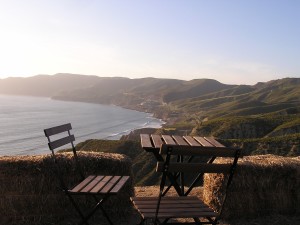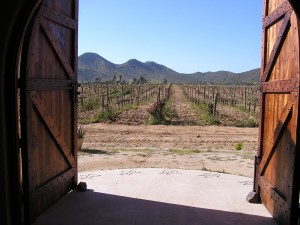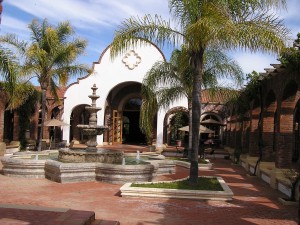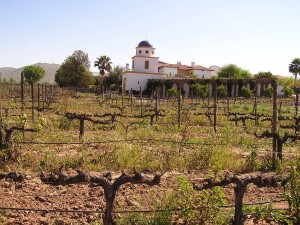In this guest post, Matilde Parente, MD, CSW gives readers a lovely armchair tour of the wine, food and history of the Guadalupe Valley, a region that’s putting Mexican winemaking on the world’s wine maps.
Wine country adventurers now have another destination to explore: Mexico’s Guadalupe Valley, located 90 miles south of San Diego in Baja California. About half the size of the Napa Valley, this Mexican valle offers a low-key and rustic wine, food, and cultural experience that will jolt your palate and swaddle you with its warmth and beauty.
Although Mexican wine has only recently burst onto the radar of norteños, our southern neighbor has been making wine since the 1500s, after conqueror Hernán Cortés requested grapevines from Spain and before vineyards were planted in Chile and Argentina.
Milestones in Baja winemaking include efforts by the Jesuits in the early 1700s, the 1888 founding of Bodegas de Santo Tomás, Baja’s oldest continuously operating winery and the winegrapes planted by Russian Molokan refugees in the early 1900s. More French and Italian varieties were introduced to Baja in the early 20th century, aided by Wente’s James Concannon and the Piedmont-born Italian viticulturist Esteban Ferro.
The modern era in Baja winemaking began in 1972 with the founding of Casa Pedro Domecq and has accelerated since the 1980s, which saw the emergence of the Valle’s first boutique winery, Monte Xanic, and the rising prominence of the Bordeaux-trained enologist Hugo D’Acosta. In 2004, D’Acosta founded a winemaking school, the Estación de Oficios Porvenir, affectionately known as La Escuelita, to train and help support small-scale winegrowers.
Common red grape varieties planted today include heat-loving Cabernet Sauvignon, Merlot, Malbec, Tempranillo, Zinfandel, Carignan, Aglianico, Syrah, and Petit Sirah—along with Barbera, Nebbiolo and Spain’s original Mission grape. White varieties include Chardonnay, Colombard, Sauvignon Blanc, Semillion, and Viognier. Delicious rosés are also made from many of these varieties, notably those from Nebbiolo.
Although some single-varietal wines are made, most Valle wines are blends, some of which are unusual, such as the outstanding Rafael, a Cabernet-Nebbiolo blend by Adobe Guadalupe. Limited more by their imagination than AOP-type regulations, Mexican winemakers continue to experiment with their terroir and winemaking decisions.
Guadalupe Valley soils are a mixture of sandy loam and red clay. Lying just within the 30-degree latitude for quality winegrowing, the arid Valle receives only about 3–4 inches of rain annually with daytime temperatures averaging 86°F in summer and 42°F in winter. Yields average 2–3 tons per acre.

The view just before sunset at Ensenada’s Cuatro Cuatros resort and outdoor restaurant (Photo Credit: Matilde Parante)
Today, the more than 60 Guadalupe Valley wineries account for 90% of Mexico’s wine production with L.A. Cetto, Domecq and Monte Xanic producing the lion’s share of the region’s wines. According to 2014 figures, Mexican wineries produced just over two million cases of wine a year, which accounted for about one-third of domestic (Mexican) wine sales. Most other wineries and artisan winemakers are small-production, family-owned and -operated enterprises with limited marketing and distribution opportunities, even within Mexico.
Traditionally, beer and tequila have been the nation’s most popular adult beverages. However, Mexican wine consumption has seen a 12% increase over the past decade, especially among the upper middle class and younger consumers. Key Mexican wine markets are Mexico City and Guadalajara restaurants and their more affluent residents.
The two-lane Ruta del Vino (wine route) tracks north and east from coastal Ensenada towards Tecate. Wineries that deserve a stop and a few sips include the Adobe Guadalupe (with a free tasting and homemade breakfast included with your stay), the architecturally stunning Monte Xanic, Villa Montefiori, Viña de Frannes (where Michel Roland consults), Vinicola Torres Alegre y Familia and La Lomita Winery.
On and off the the well-marked Ruta you’ll also find a range of accommodations, from the air-conditioned cabins of Ensenada’s glamping hot spot Cuatro Cuatros to the relaxed country sophistication of the six-room Adobe Guadalupe, which is also home to its outstanding winery and Azteca horse stables.
Finally, no wine country would be complete without great food and a museum. The $5.3 million Museo de La Vid y El Vino inaugurated in 2012 is a spacious modern architectural wonder where you can learn more about the region’s fascinating history.

A view of the vineyards at Adobe Guadalupe from the Azteca horse stable (Photo Credit: Matilde Parente)
The Baja food scene evolved along with the emerging wine scene, propelling it forward gastronomically. Known as Baja Mediterranean, the local cuisine is creative, healthful and farm-fresh. Along with al fresco pleasure, freshly caught seafood and flavorful Valle-grown produce are exceptional. Many dishes are prepared with the local olive oil, a must-buy at many wineries.
Homegrown and resettled chefs such as Javier Plascencia (Finca Altozano), Drew Deckman (Deckman’s en el Mogor), Angelo Dal Bon (Tre Galline at the Villa Montefiori winery), Leda Gamboa (The Adobe Food Truck at the Adobe Guadalupe) and Diego Hernandez (Corazon De Tierra) continue to transform, elevate and energize the local food scene with their creativity and enoturismo evangelism.
For those unwilling or unsure about driving down to the Valle, a few reputable companies offer guided tours for small groups and individuals, including Fernando Gaxiola’s Baja Wine + Food. Although 4-wheel drive isn’t required, most roads leading up to the wineries are pocked dirt roads and dusty feet are guaranteed – a good enough reason to kick ‘em up and enjoy another sip of delicious Guadalupe Valley wine.
About the author: Matilde Parente, MD, CSW blogs at www.writeonwines.com and tweets @winefoodhealth.
References:
- Covarrubias J, Thach L. Wines of Baja Mexico: A qualitative study examining viticulture, enology, and marketing practices. Wine Economics and Policy. Vol 4, Issue 2, Dec 2015, pp 110–115.
Are you interested in being a guest blogger or a guest SWEbinar presenter for SWE? Click here for more information!

